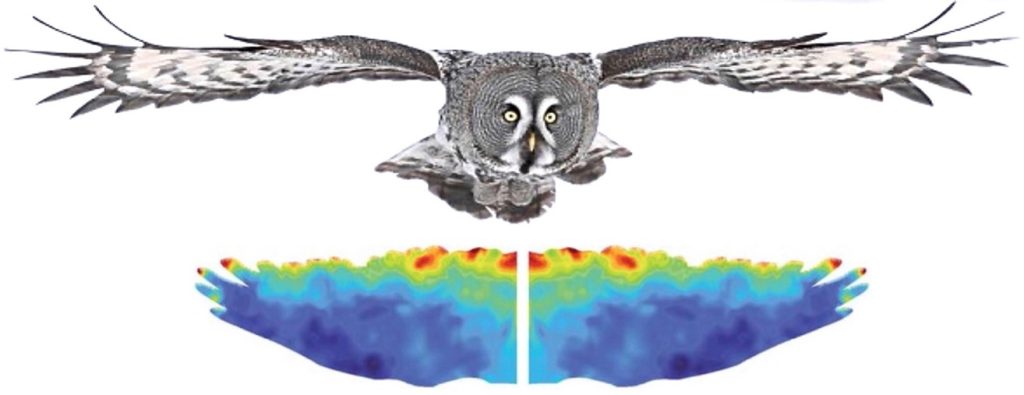We reach more than 65,000 registered users in Dec!! Register Now

Uncovering the Secrets Behind the Silent Flight of Owls
- October 10, 2024
- 27 Views
- 0 Likes
- 0 Comment
Researchers investigate the aeroacoustic mechanisms that allow owls to fly silently using numerical simulations
Owls produce negligible noise while flying. While many studies have linked the micro-fringes in owl wings to their silent flight, the exact mechanisms have been unclear. Now, a team of researchers has uncovered the effects of these micro-fringes on the sound and aerodynamic performance of owl wings through computational fluid dynamic simulations. Their findings can inspire biomimetic designs for the development of low-noise fluid machinery.
Owls are fascinating creatures that can fly silently through some of the quietest places. Their wings make no noise while flying, enabling them to accurately locate their prey using their exceptional hearing ability while remaining undetected. This unique ability depends on many factors and has long been a hot research subject.
Studies have found associations between the ability to fly silently and the presence of micro-fringes in owl wings. These trailing-edge (TE) fringes play a crucial role in suppressing the noise produced by wing flap-induced air movement.
Studying these fringes can lead to the development of promising methods to reduce noise caused by fluid machinery. While many studies have evaluated these fringes using flat plates and airfoils, their exact mechanisms and effects on the interactions of feathers and the different wing features in real owl wings remained unknown.
To unravel the secrets of silent owl wings, Professor Hao Liu with his colleagues, including Dr. Jaixin Rong from the Graduate School of Engineering and Dr. Yajun Jiang and Dr. Masashi Murakami from the Graduate School of Science at Chiba University in Japan, investigated how TE fringes influence both the sound and aerodynamic performance of owl wings.
When asked about the motivation behind their study, Prof. Liu says, “Despite many efforts by many researchers, exactly how owls achieve silent flight is still an open question. Understanding the precise role of TE fringes in their silent flight will enable us to apply them in developing practical low-noise fluid machinery.” Their findings were published in the journal Bioinspiration & Biomimetics on November 17, 2023.
To understand how owl wings work, the team constructed two three-dimensional models of a real owl wing—one with and the other without TE fringes—with all its geometric characteristics. They used these models to conduct fluid flow simulations that combined the methods of large eddy simulations and the Ffowcs-Williams-Hawkings analogy. The simulations were conducted at the speed of the gliding flight of approach of a real owl.
Simulations revealed that the TE fringes reduced the noise levels of owl wings, particularly at high angles of attack, and maintained aerodynamic performance comparable to owl wings without fringes. The team identified two complementary mechanisms through which the TE fringes influence airflow. First, the fringes reduce the fluctuations in airflow by breaking up the trailing edge vortices. Second, they reduce the flow interactions between feathers at the wingtips, thereby suppressing the shedding of wingtip vortices. Synergistically, these mechanisms enhance the effects of TE fringes, improving both aerodynamic force production and noise reduction.
Emphasizing the significance of these results, Prof. Liu says, “Our findings demonstrate the effect of complex interactions between the TE fringes and the various wing features, highlighting the validity of using these fringes for reducing noise in practical applications such as drones, wind turbines, propellers and even flying cars.”
Overall, this study deepens our understanding of the role of TE fringes in the silent flight of owls and can inspire biomimetic designs that could lead to the development of low-noise fluid machinery.
List of Referenes
- Jiaxin Rong, Yajun Jiang, Yuta Murayama, Ryoto Ishibashi, Masashi Murakami, Hao Liu. Trailing-edge fringes enable robust aerodynamic force production and noise suppression in an owl wing model. Bioinspiration & Biomimetics, 2023; 19 (1): 016003 DOI: 10.1088/1748-3190/ad0aa9
Cite This Article as
No tags found for this post









